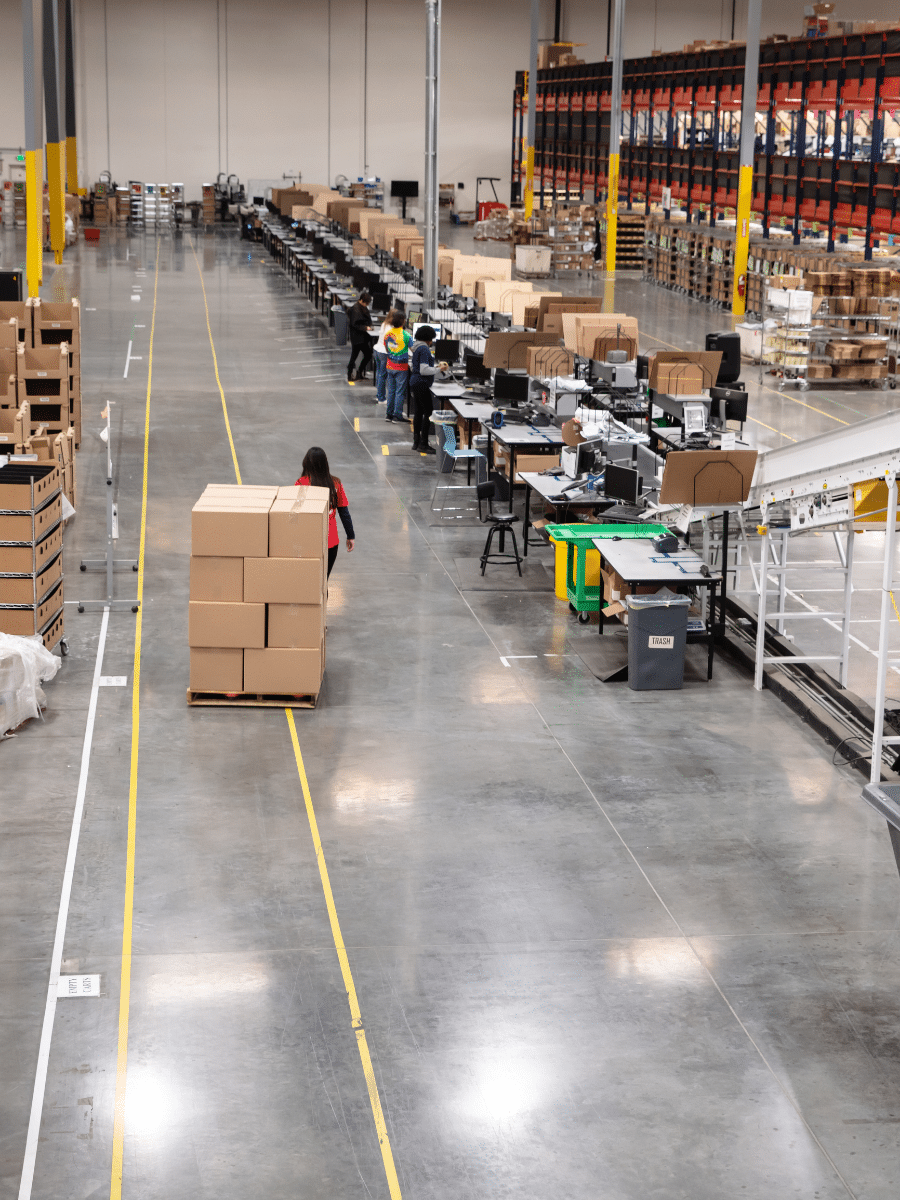Navigating an Era of Automation and Precision
The Impact of Robotics on Warehouse Productivity: Navigating an Era of Automation and Precision
Across decades, technological advancements have been instrumental in shaping industries, pushing them towards modernity and efficiency. Today, at the epicentre of this transformative wave is robotics, profoundly altering the operations within the warehousing sector. Historically, warehouses were realms dominated by manual labour, where every product that arrived or left the facility had a human touchpoint. Processes, from cataloguing items to preparing them for shipment, were human-centric, making the warehouse environment bustling with activity.
Now, this traditional picture is evolving at a rapid pace. Robots, equipped with advanced sensors, algorithms, and data analytics, are steadily assuming pivotal roles in these large facilities. It’s not just about replacing manual tasks; it’s about enhancing them. Warehousing, a crucial link in the global supply chain, has always been about precision, timeliness, and reliability. With robotics entering the mix, these attributes are amplified manifold.
The introduction of robotics in warehouses means tasks can be executed faster, with greater accuracy, and often around the clock without the need for breaks. Think of it as the next phase in the evolution of warehousing – where technology complements human skills, bringing about heightened productivity levels never seen before.
How will this change shape the upcoming phases of the industry? How does blending human knowledge with machine efficiency reshape the world of international trade? As we examine further, we’ll dive into the subtleties of this change, discussing its impact on employees and pondering the prospects it brings for enhancement and novelty in a domain bridging old practices with modern advancements.
Unpacking the Potential of Robotics in Warehousing
Grasping the fundamentals of warehousing is crucial. Warehouses act as central nodes in worldwide trade, linking the stages of creation and usage. They play a pivotal role in facilitating a smooth transfer of items from producers to end-users. Even though conventional warehousing techniques have showcased their effectiveness, they possess certain constraints. Robotics is steadily stepping in to overcome these challenges.
Precision Picking:
In a warehouse, picking stands out as one of the most crucial operations. The entire supply chain efficiency hinges on the accuracy of this single process. The introduction of robotics into this facet has led to substantial improvements. Equipped with cutting-edge sensors and driven by sophisticated AI algorithms, robots can consistently identify and pick the correct item. This level of precision significantly diminishes the chances of errors, leading to reduced returns and increased customer satisfaction.
Packaging Proficiency:
Packaging isn’t just about wrapping products. It demands a balance—efficient use of space without compromising product safety. Robots excel in this area. They possess the capability to compute exact dimensions and execute consistent packaging operations, resulting in optimal product protection and space utilisation, which translates to cost savings.
Masterful Mobility:
The transport of goods within the warehouse is as important as external logistics. Automated Guided Vehicles (AGVs) and similar robotic systems play a pivotal role in this internal transit. They ensure that products move within the warehouse environment both quickly and safely, maximising space utilisation and minimising handling time.
Balancing Robotics with Human Expertise
While robotics is surging ahead in warehousing operations, it doesn’t spell the end for human roles. It represents a transition. Robots excel at repetitive, labour-intensive, or high- precision tasks. This automation allows human employees to redirect their energies towards roles demanding critical thinking, decision-making, and complex problem-solving.
Safety and Financial Implications of Robotics
The discussion on robotics would be incomplete without acknowledging its impact on workplace safety. Unlike humans, robots don’t suffer from fatigue—either physical or mental. This attribute significantly reduces the likelihood of accidents, creating a safer working atmosphere.
Moreover, although the initial outlay for robotic systems may appear significant, the long- term financial benefits are evident. Reduced errors, a decline in workplace injuries, and enhanced efficiency contribute to a return on investment that justifies the initial expenditure.
Anticipating the Future: The Path Ahead
Robotic applications in warehousing are more than just a passing phase. As advancements in AI and machine learning continue, we can expect even greater capabilities from these systems. Future warehouses might lean heavily on automation, shifting human responsibilities more towards oversight, planning, and directional roles, all to maintain adaptability and efficiency in a constantly shifting global landscape.
Conclusion: The Tangible Impact of Robotics in Warehousing
To wrap up, robotics is having a profound effect on the warehousing sector. This impact extends beyond mere influence; it’s ushering in a new era of operational excellence. Robotics addresses essential tasks with impeccable efficiency. For instance, with tasks like picking products and moving them around, robots are setting new benchmarks in the warehousing industry, establishing heightened accuracy and speed.
This automation allows human employees to focus on more complex tasks, which require decision-making and strategic insight.
Projecting forward, there’s an undeniable emphasis on the role of robotics within warehouse practices. This isn’t merely about modernisation; it revolves around sustaining top-notch, agile, and competitive warehouse functions.
Given the fluid nature of warehousing and supply chain practices, harnessing robotic advancements is fundamental for enterprises striving to uphold a dominant position in the field.



